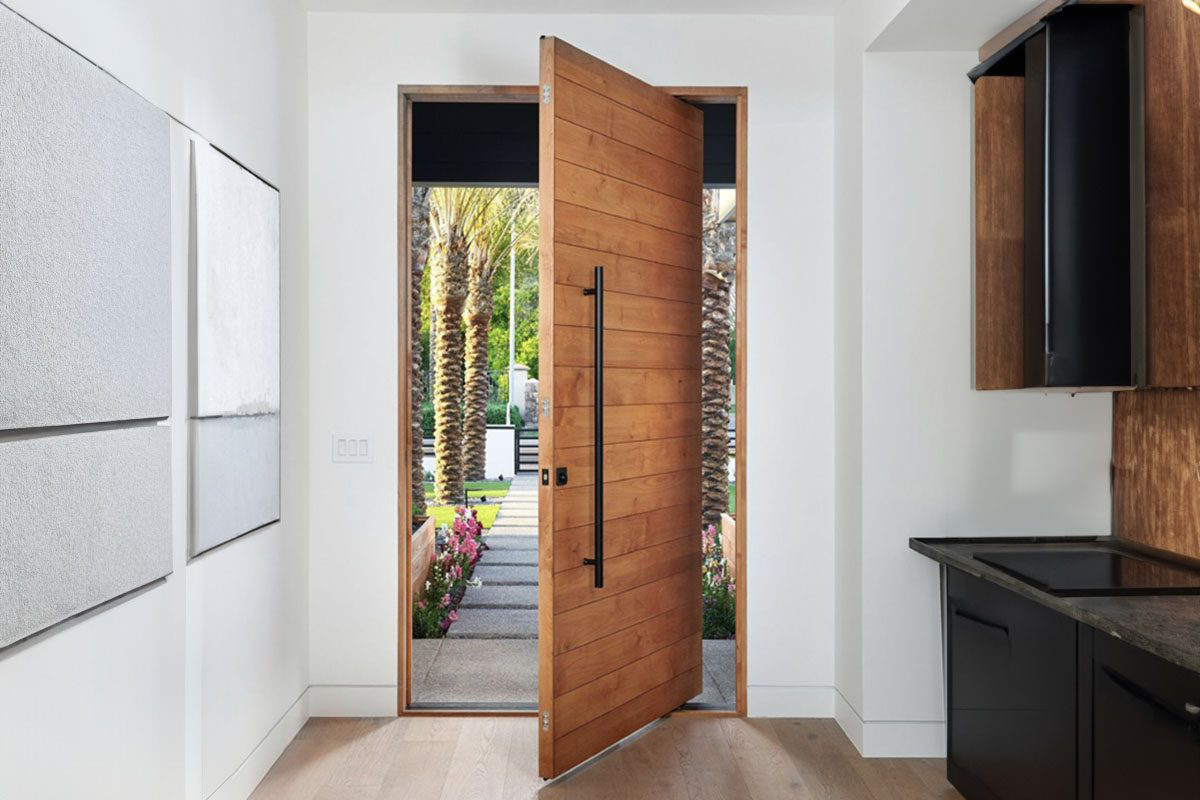What’s a common interior door size?
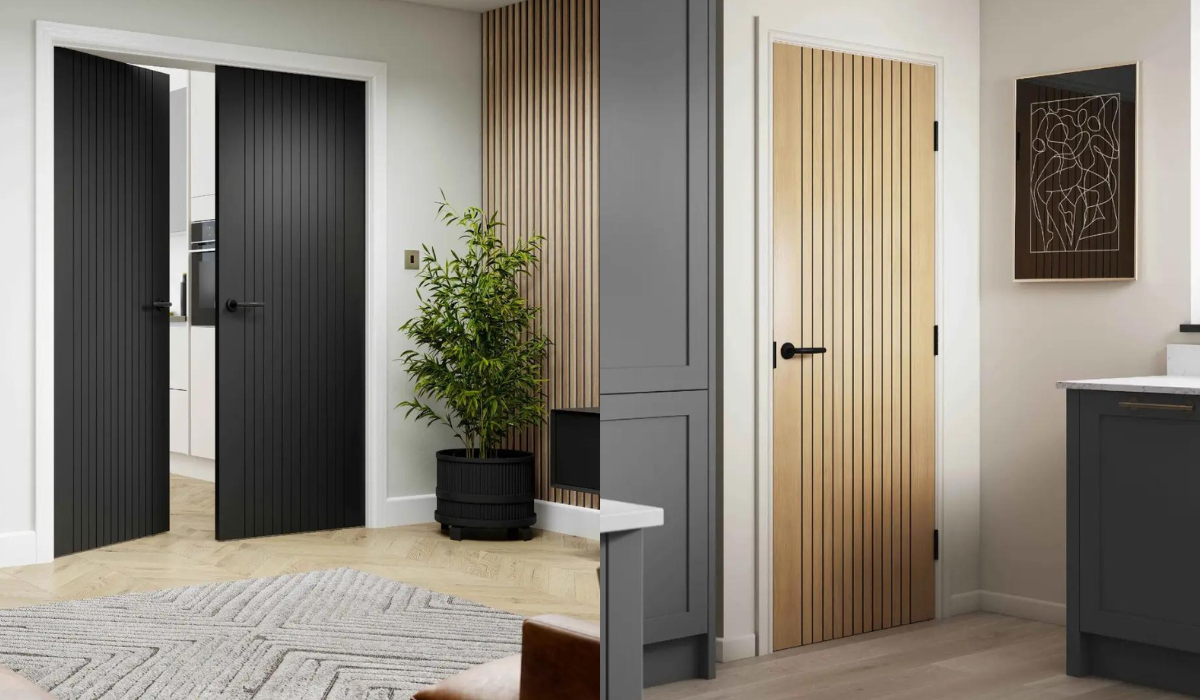
Introduction to Interior Door Sizes
When it comes to designing or renovating your home, choosing the right interior door size can be a game-changer. While often overlooked, the size of the door plays a crucial role in both aesthetics and functionality. Whether you are working on a new build or updating your existing space, selecting the proper interior door size ensures a seamless look and optimal performance.
Why Door Size Matters?
The size of your interior doors matters more than you might think. A door that is too small can make a room feel cramped, while one that is too large can dominate the space. An ill-fitting door might even affect the door’s functionality—making it difficult to open, close, or lock properly. In homes with limited space, every square inch counts. For example, interior doors that are too wide or tall can disrupt the room’s flow and cause congestion in tight spaces. On the other hand, if the door is too small, it can seem out of place and detract from the room’s design.
Additionally, the size of interior doors affects the placement of other elements in your home. Furniture arrangement, wall space, and lighting all play into the decision. Understanding the importance of size will help you avoid design flaws that might cost you time and money in the future.
Key Factors Affecting Door Sizes
Several factors should influence your choice of interior door sizes. Here are the key considerations to keep in mind:
1. Room Functionality:
The room’s function determines the ideal door size. For example, a bedroom door might be smaller than a living room door or a main entrance door. Larger rooms may benefit from wider doors to create an open feel, while smaller spaces could do well with narrower ones.
2. Door Type:
The type of interior door (e.g., swinging, sliding, bifold) plays a big role in its size. Sliding doors often require less space than traditional swinging doors, as they don’t need clearance to open and close. Bifold doors are typically used for closets and can be more space-efficient in tight spaces.
3. Standard Door Sizes:
While custom interior doors are an option, most homes use standard sizes. For example, a standard interior door in the U.S. is usually 80 inches in height and 24 to 36 inches in width. However, this can vary based on the type of room or the home’s design. It’s essential to be aware of these standard sizes and ensure your space aligns with them.
4. Building Codes:
Local building codes and regulations can impact the size of interior doors. For example, certain doors, such as those leading into bathrooms, may require specific widths for accessibility. Always check these requirements before making a decision.
5. Aesthetic Preferences:
Lastly, your personal style will influence the door size. For example, if you prefer a more traditional look, you might opt for a taller door, while a modern, minimalist design might require sleek, narrower doors.
Importance of Choosing the Right Size for Your Home
Selecting the right interior door size can significantly impact the overall appearance and ambiance of your home. Doors are not just functional—they are key design elements that help define your space. Selecting the correct size ensures that your doors fit well within the flow of your home’s design. If you choose a door that’s too large for a small space, it could overwhelm the room, making it feel cramped. On the other hand, a door that is too small may create an awkward contrast in a larger room.
Furthermore, the right door size can also contribute to improved energy efficiency. A properly sized door will seal more effectively, preventing drafts and ensuring your home remains comfortable year-round. Not only does it improve the look and feel of your home, but it also enhances its performance, making your home more energy-efficient.
Overall, the interior door you choose must align with the dimensions of your room, the style of your home, and its intended use. While it may seem like a minor detail, selecting the right interior door size can significantly enhance your home’s overall design, functionality, and comfort.
Standard Interior Door Sizes
When it comes to choosing the right interior door size for your home, understanding standard dimensions is crucial. While custom sizes are available, most interior doors fall into a few standard categories. Knowing these sizes helps you make the best choice for your space and ensures you don’t face any surprises during installation.
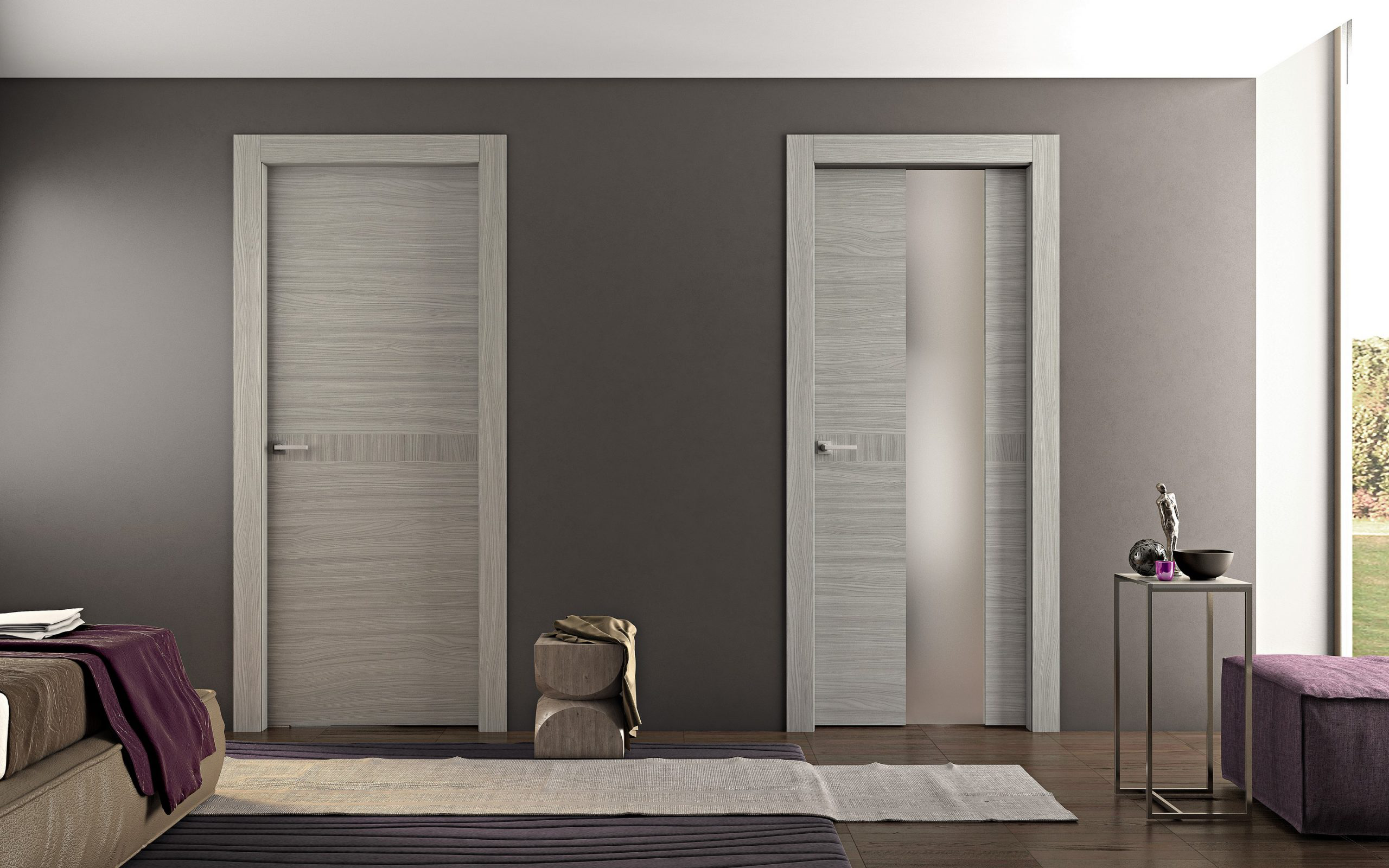
Most Common Door Widths
The width of interior doors can vary depending on the door’s function and location. Below are the most common interior door widths, each serving a different purpose in your home.
24 inches (61 cm)
A 24-inch interior door is the narrowest option typically used in homes. This size is often suitable for small spaces like closets, pantries, or utility rooms, where a larger door would occupy too much space. Although it’s compact, it still provides easy access for storing items and accessing small rooms. For areas such as tight hallways or small apartments, a 24-inch interior door is a suitable choice.
28 inches (71 cm)
The 28-inch door is slightly wider than the 24-inch door, making it a common choice for smaller bedrooms or bathrooms. While it may be too narrow for a living room or main areas, it fits well in spaces that don’t require a large door. It’s also ideal for small apartments or for those seeking a space-saving solution. In some regions, this size is commonly used for bathroom doors or for closets where space is tight but still needs easy access.
30 inches (76 cm)
The 30-inch interior door is one of the most commonly used door sizes in homes today. It’s a versatile option, fitting comfortably in almost any room, whether it’s a bedroom door, bathroom door, or hallway entrance. This width provides sufficient space for people to move through easily without occupying too much room in the design. It’s a solid choice for homes with standard room sizes and works well in both modern and traditional homes.
32 inches (81 cm)
A 32-inch door is a popular size for rooms that require a bit more space. This width is often used for bedrooms or office doors, providing extra room for ease of movement. It’s also a great option for homes that need to accommodate larger furniture or equipment that requires passage through doorways. If you’re looking for a door that strikes a balance between space efficiency and comfort, a 32-inch interior door is an excellent choice. It’s wider than the typical 30-inch and provides a more spacious feel in smaller rooms.
36 inches (91 cm)
For those who require more space to move or need accessibility, a 36-inch interior door is the ideal choice. This size is often used for entrances, main rooms, and even wheelchair accessible doors. It allows plenty of space for people to walk through comfortably and is especially helpful for homes that need to follow ADA (Americans with Disabilities Act) standards. 36-inch doors are also common in living rooms, kitchens, and family rooms where traffic is heavier or the room is larger. They are also ideal for bathroom doors in larger homes where more space is needed.
Standard Door Heights
The height of interior doors is just as important as the width. Here are the standard heights you’ll typically encounter when choosing interior doors for your home.
80 inches (203 cm)
The most common interior door height is 80 inches (203 cm). This height is the standard for most homes, offering a balanced look that works well in typical room designs. 80-inch doors are widely used for bedrooms, bathrooms, and living room doors, and they’re often found in most pre-built homes. This height gives a comfortable clearance for people of average height to pass through easily. If you’re looking for a standard door that blends in seamlessly with your home’s layout, the 80-inch interior door is your best bet.
84 inches (213 cm)
An 84-inch interior door is slightly taller than the standard 80-inch door, and it’s gaining popularity in modern homes. This extra height gives a more expansive feel, making the space appear larger and more open. 84-inch doors are often used in high-ceilinged homes or for rooms where a grander look is desired. For instance, living rooms, master bedrooms, and entrances are perfect candidates for this size. It adds a touch of luxury and elegance while still fitting within the common door frame dimensions. If you’re working with a more modern design or want to make a statement with your doors, the 84-inch door is an excellent choice.
96 inches (244 cm)
For homes with tall ceilings or those seeking a more dramatic look, a 96-inch interior door is the ideal choice. This height offers a high-end, customized feel that elevates the entire space. 96-inch doors are often used in grand entrances, formal dining rooms, and living areas where the ceiling height is above average. While they’re not as common as 80-inch or 84-inch doors, they provide a striking visual impact, especially in homes with open, airy designs. 96-inch doors allow for plenty of natural light and can make a smaller space feel more open and connected to the rest of the Home.
Popular Door Thicknesses
Choosing the right interior door thickness ensures your door performs well and complements the room’s design. There are two common thicknesses used for interior doors: 1 3/8 inches (35 mm) and 1 3/4 inches (44 mm). Let’s take a closer look at both options.
1 3/8 inches (35 mm)
The 1 3/8-inch (35 mm) door thickness is the most common choice for interior doors in many homes. This size is typically used for standard bedroom, closet, and bathroom doors. It’s lightweight, affordable, and easy to handle, making it a popular option for homes with a more budget-conscious approach to door installation. While it doesn’t provide as much sound insulation or durability as thicker doors, it is still functional and suitable for rooms that don’t require a high level of privacy or noise reduction.
If you’re working with a smaller budget or building a home with standard door sizes, 1 3/8-inch doors are a solid choice. They are lightweight, easy to install, and cost-effective, offering a balance between function and price. However, for rooms that require more privacy or better noise control, you may want to consider the thicker option.
1 3/4 inches (44 mm)
The 1 3/4-inch (44 mm) thickness is commonly used for more substantial interior doors, especially in high-traffic areas or spaces that require extra durability. This thickness is ideal for front doors, office doors, or living room doors that require greater durability. The 1 3/4-inch door is sturdier, providing more strength, insulation, and noise reduction than the 1 3/8-inch door. It’s also more secure, offering an additional layer of protection for rooms that require enhanced privacy, such as bathrooms or home offices.
Choosing a 1 3/4-inch interior door is a great option if you want a more robust door that will last longer and provide better sound insulation. While it may be slightly more expensive than the 1 3/8-inch version, its added benefits often outweigh the cost, especially in areas that receive heavy use or require better noise control.
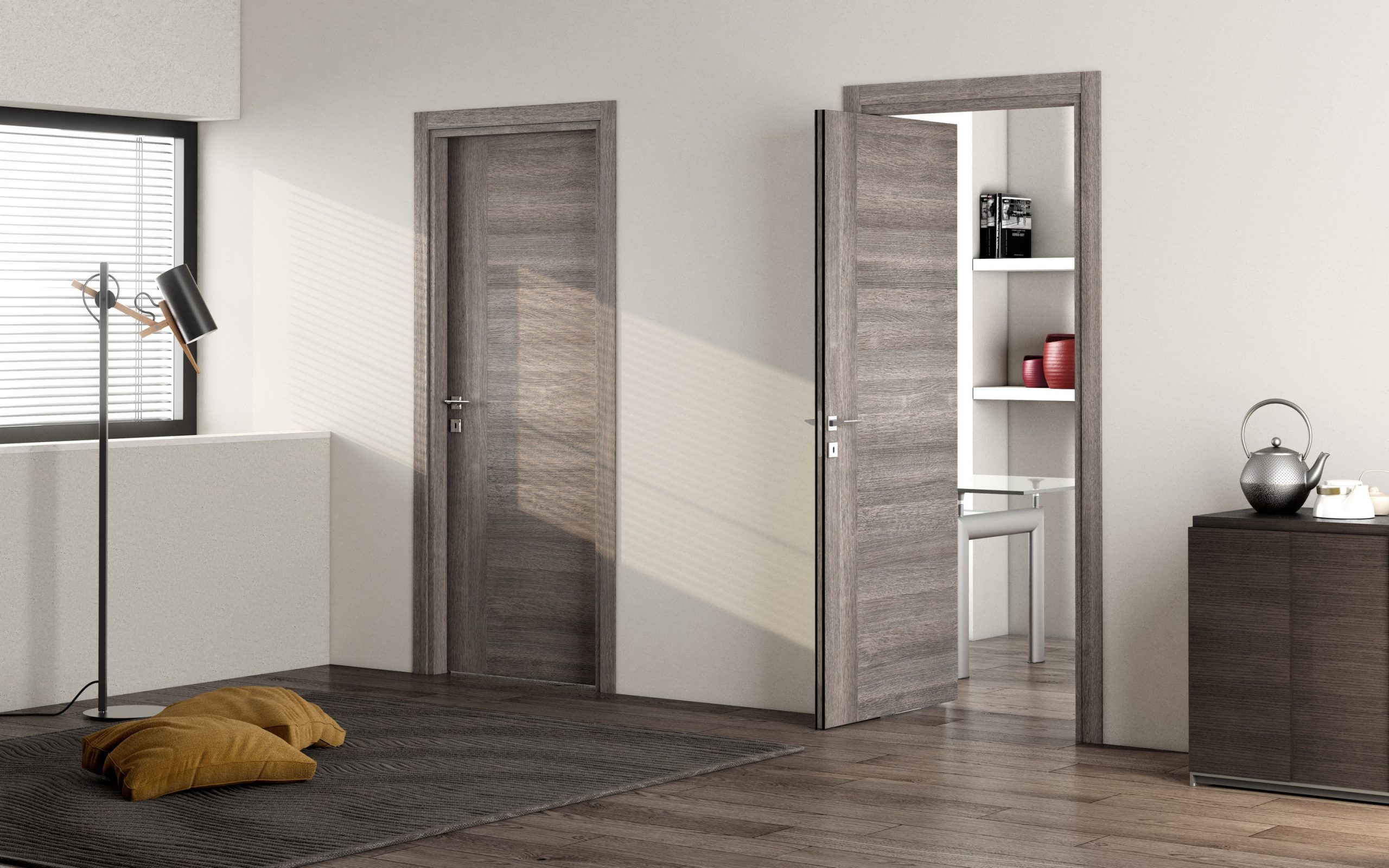
Customizing Interior Door Sizes
Sometimes, standard interior door sizes don’t meet the needs of your home. Whether due to unique room dimensions or a specific design vision, you may need to consider custom interior doors. Custom doors enable you to create a door that perfectly suits your space and style.
When to Choose a Custom Size?
Opting for a custom interior door size is often the best choice in specific situations. Here are some common scenarios where a custom door is the right solution:
1. Non-Standard Door Frames:
If your home has older architecture or non-standard door frames, a custom interior door ensures a proper fit. Older homes may have door frames that don’t conform to current building standards, so custom doors are necessary to maintain the space’s aesthetics and functionality.
2. Unique Room Layouts:
In some cases, your room may require an interior door that doesn’t fit within the usual size options. For example, a pantry door or closet door in a tight space may need to be smaller or have a unique shape.
3. Specific Design Preferences:
If you have a particular design vision in mind, a custom door size gives you the flexibility to bring that idea to life. Whether you want an oversized living room door or a door with a unique style, custom sizes offer endless possibilities.
4. Accessibility Requirements:
For homes that require wider doorways, such as those with wheelchair access or in high-traffic areas, a custom interior door size ensures you meet accessibility standards and provide ease of movement.
Pros and Cons of Custom Interior Doors
Choosing a custom interior door can offer several benefits, but it’s important to weigh the pros and cons before making a decision.
Pros:
- Perfect Fit: A custom door guarantees a perfect fit, whether your door frame is irregular or you have specific design needs.
- Unique Design Options: You can select materials, finishes, and hardware that complement your personal style, making the door a distinctive element in your home.
- Increased Functionality: Custom doors can be designed to meet specific needs, such as larger doors for accessibility or soundproof doors for privacy.
- High-Quality Materials: With a custom door, you have more control over the materials, ensuring higher quality and durability compared to standard options.
Cons:
- Higher Cost: Custom interior doors are more expensive than standard sizes due to the additional labor, materials, and craftsmanship required.
- Longer Lead Time: Custom doors require more time to manufacture and install, so you’ll need to plan if you’re on a tight timeline.
- Complexity: With more design options come more complexities in choosing the right materials and finishes, which can be overwhelming if you’re not familiar with door design.
How to Measure for a Custom Door?
Accurate measurements are crucial when ordering a custom interior door. Here’s a simple step-by-step guide to ensure you get the right size:
- Measure the Door Frame: Start by measuring the height and width of the existing door frame. Measure from the top, middle, and bottom to ensure the frame is square. For width, measure from one side of the frame to the other.
- Measure the Door Opening: If you’re replacing an existing door, check the actual opening to ensure you order the right size. This includes the clearance at the top, sides, and bottom of the frame.
- Determine the Door Thickness: Consider whether you need a 1 3/8-inch or 1 3/4-inch thickness, depending on the door’s design and function.
- Account for Door Swing: Determine which way the door will open (left or right swing), as this affects both the measurements and hardware selection.
- Consider the Floor: Measure the distance from the bottom of the door frame to the floor to ensure the door doesn’t scrape the floor or carpet when opening.
Costs of Custom Door Sizes
Custom interior doors come at a higher cost compared to standard doors. The price depends on several factors, including the materials, size, style, and any additional features. On average, a custom interior door can cost anywhere from $300 to $1,000 or more, depending on the complexity of the design.
- Material Costs: Premium materials, such as solid wood, glass panels, or high-end finishes, will drive up the price. If you choose a specialty material, such as reclaimed wood or a custom finish, expect to pay more.
- Labor and Installation: Custom doors often require skilled labor to create and install. Professional installation costs can range from $100 to $500, depending on the complexity of the door and the installation process.
- Design and Custom Features: The more intricate the design, the higher the cost. Features such as custom hardware, decorative panels, or intricate carvings can add to the overall price.
- Lead Time: Custom doors may require a longer lead time, which can increase costs if you need expedited production or shipping.
Conclusion
Customizing your interior door sizes can be a great solution when standard options don’t meet your needs. Whether you’re working with unique room layouts, have specific design preferences, or require accessibility features, custom interior doors offer the flexibility to enhance your home’s look and feel. Just be sure to carefully measure your space, consider your budget, and weigh the pros and cons before making a decision.
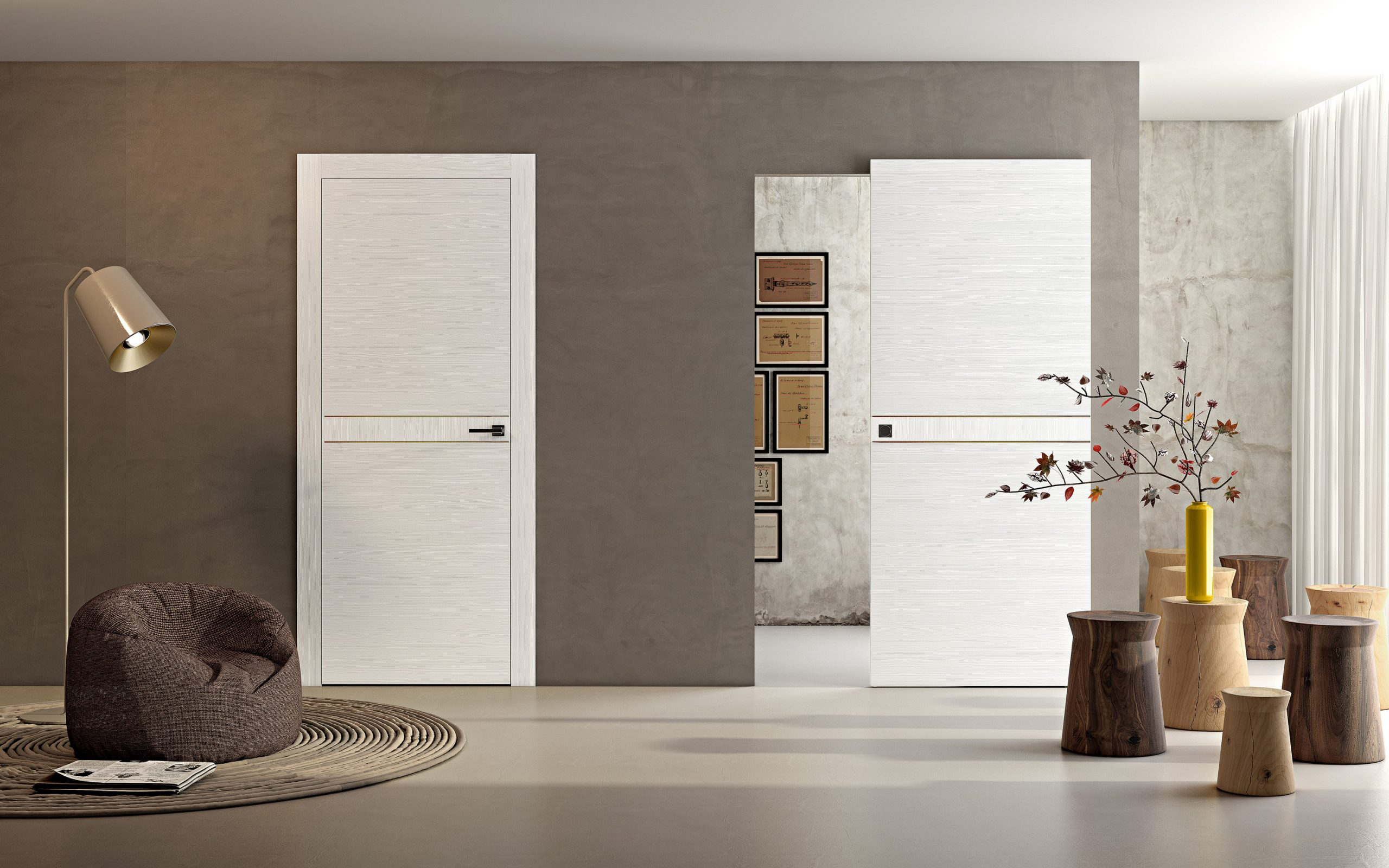
Different Types of Interior Doors and Their Sizes
Choosing the right interior door for each room in your home is essential for both functionality and style. There are several types of interior doors, each designed for specific purposes. Understanding the different types and their standard sizes will help you make the best choice for your home’s needs. Let’s explore the most popular options, from bedroom doors to French doors, and learn about their sizes and ideal uses.
Bedroom and Bathroom Doors
When selecting bedroom doors or bathroom doors, it’s important to strike the right balance between privacy, accessibility, and design. These doors are typically used in spaces that require personal privacy, such as bedrooms and bathrooms.
- Standard Sizes: The typical interior door size for bedrooms and bathrooms is 30 inches (76 cm) wide and 80 inches (203 cm) tall. This is the most common size and fits well in most homes.
- Privacy Considerations: For bathroom doors, some homes may opt for a slightly wider 32-inch door (81 cm) to provide extra space and ensure smooth entry. Wider doors can also be beneficial for wheelchair accessibility in homes that require ADA-compliant designs.
- Design Options: Bedroom doors are available in various styles, including solid panel doors for complete privacy and louvered doors for enhanced ventilation. For bathroom doors, it’s often best to go with a solid or semi-solid door to block sound and maintain privacy.
Closet Doors
Closets are an essential part of any home, and the interior doors for closets need to be both functional and space-efficient. Closet doors come in a variety of styles to suit different needs, from traditional swinging doors to more modern bi-fold and sliding doors.
- Standard Sizes: The standard size for closet doors typically ranges from 24 inches (61 cm) to 36 inches (91 cm) in width and 80 inches (203 cm) in height. These sizes can vary depending on the closet space available and the desired door style.
- Types of Doors: For smaller closets, a 24-inch door is commonly used, while larger walk-in closets often employ 36-inch doors for improved access. Bi-fold doors are especially popular for closets because they fold neatly to the side, saving space. Sliding doors are another great option for closets, particularly in smaller rooms where traditional swinging doors might be too large.
Sliding Doors and Bi-Fold Doors
Sliding and bi-fold doors are ideal choices when you have limited space or want a more modern look for your home. These interior doors offer practical solutions for closets, bathrooms, or even room dividers.
- Sliding Doors: A sliding interior door is a popular choice for smaller spaces, such as closets or bathrooms. Sliding doors don’t require any clearance to swing open, making them an ideal choice for rooms with limited space. The most common sliding door size is 36 inches (91 cm) wide and 80 inches (203 cm) tall, though custom sizes are available for larger openings.
- Bi-Fold Doors: Bi-fold doors consist of two panels that fold inward. They are commonly used for closets or even as room dividers. The standard bi-fold door size is typically 24 inches (61 cm) to 36 inches (91 cm) wide and 80 inches (203 cm) tall. These doors are an excellent choice for saving space while still providing easy access to the closet or room.
French Doors and Double Doors
French doors and double doors are both elegant options for larger rooms or entrances. They offer a stylish way to separate rooms while maintaining an open and airy feel.
- French Doors: French doors typically consist of two hinged doors with glass panels, allowing light to pass through and creating a more open feel. Standard French door sizes are usually 30 inches (76 cm) to 36 inches (91 cm) wide per door, with a height of 80 inches (203 cm). However, double French doors can also be custom-sized to fit larger openings.
- Double Doors: Double doors are commonly used for larger rooms, such as living rooms or dining rooms, and can be designed as solid or glass-paneled doors. Standard double door sizes typically range from 60 inches (152 cm) to 72 inches (183 cm) in width, with a height of around 80 inches (203 cm). Double doors allow for a more grand entrance and can be used to create an elegant focal point in any room.
Conclusion
The type of interior door you choose for your home depends on your specific needs and the space available. Whether you’re looking for a bedroom door for privacy, a sliding door for a small closet, or elegant French doors to enhance a larger room, understanding the standard sizes and uses of these doors will help guide your decision.
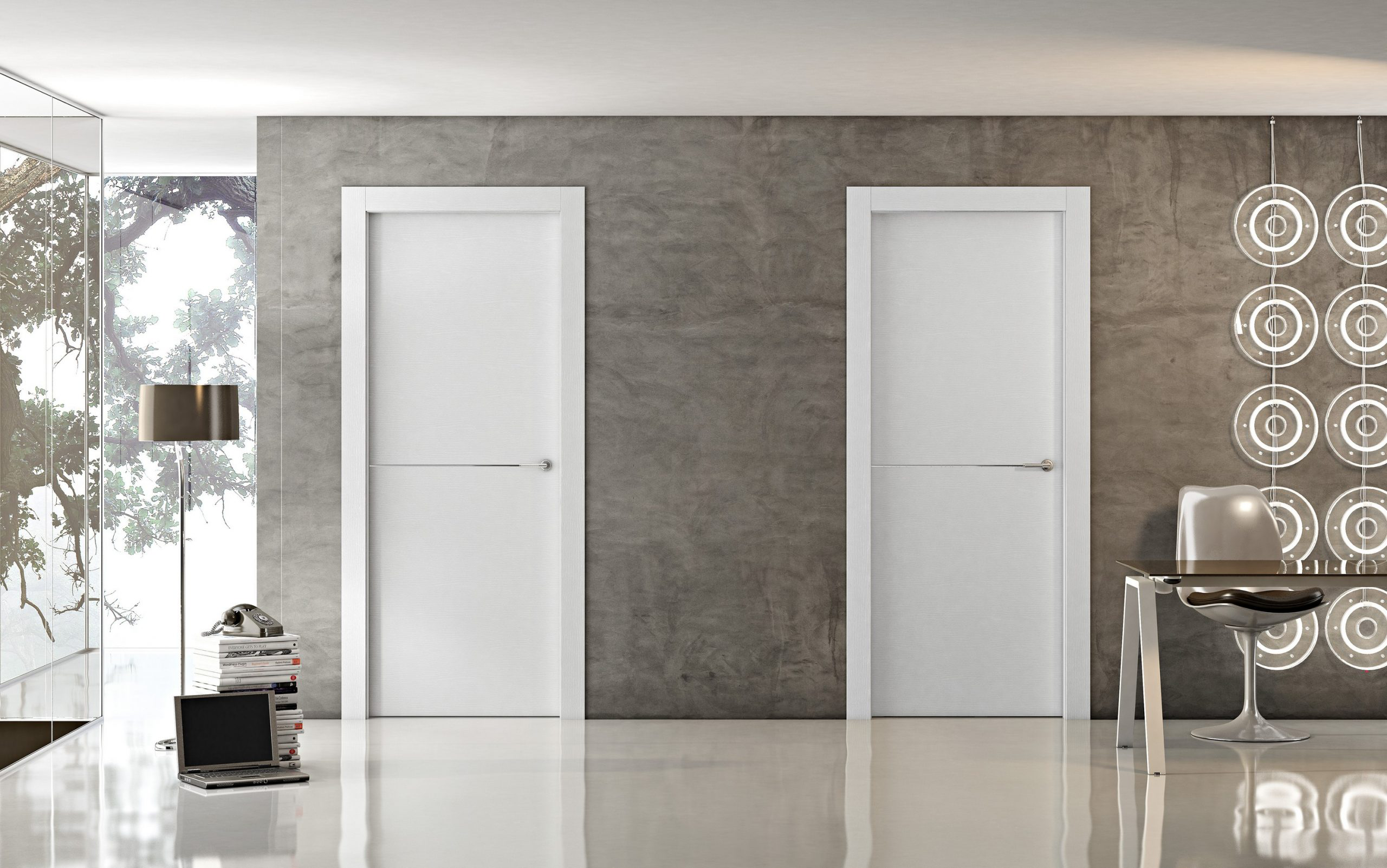
Factors to Consider When Choosing Interior Door Sizes
When selecting interior door sizes, it’s essential to consider various factors to ensure that the door you choose fits both the room’s function and the overall design of your home. Whether you’re upgrading your bedroom doors or installing closet doors, understanding these factors will help you make a decision that meets your needs. Let’s explore the key aspects to consider when selecting the ideal interior door size.
Room Functionality
One of the first things to consider when selecting an interior door is the room’s function. Each room in your home serves a different purpose, and the door size should complement that function.
- Privacy Needs: Rooms that require more privacy, such as bathrooms or bedrooms, may benefit from larger doors or those that offer better soundproofing. A 36-inch door or a solid core door can help reduce noise and provide extra privacy.
- Utility Rooms and Closets: Smaller spaces, such as closets or utility rooms, typically don’t need a large door. 24-inch doors are commonly used for smaller closets, while bi-fold doors or sliding doors are ideal for saving space while still providing easy access.
- High-Traffic Areas: For living rooms or hallways, you’ll likely need a wider interior door to accommodate increased foot traffic. A 30-inch or 32-inch door provides more comfort and flow in such areas.
Traffic Flow and Accessibility
The way people move through a room is another crucial factor when choosing interior door sizes. Traffic flow and accessibility significantly impact how easily one can move through a space and can help determine the optimal door size.
- Wide Openings for High Traffic: In areas with frequent movement, such as the kitchen or living room, a wider door ensures smooth traffic flow. 36-inch doors are typically used for these spaces, offering ample space for people to pass through comfortably.
- Accessible Doors for All: If you have family members or guests who need additional assistance, consider opting for a wider door to accommodate wheelchairs or mobility aids. A 36-inch door is the standard for homes needing ADA-compliant entrances.
- Swing or Sliding?: Think about whether your door swings or slides. Swinging doors require clearance space to open, whereas sliding doors and bi-fold doors are more suitable for narrow spaces where you want to minimize door interference with the layout.
Aesthetic and Design Preferences
While functionality is key, the design and overall aesthetic of your home should also play a role in determining the size of your interior doors. The door isn’t just a practical feature—it’s also a design element that can enhance the room’s style.
- Matching the Room’s Style: For a modern minimalist look, consider sleek, narrow doors. For a traditional style, wider, more ornate doors may be preferred. Your interior door size should complement the room’s existing furniture and décor to create a cohesive design.
- Room Proportions: In rooms with high ceilings or large spaces, consider using taller doors, such as the 84-inch or 96-inch options, to maintain proportionality. French doors or double doors can add an element of elegance and visually open up the space.
- Style of the Door: The type of door you choose—whether it’s solid, panel, glass, or louvered—also influences the door size. A glass-paneled door may be ideal in a room where you want to maximize light, while solid doors offer privacy and sound insulation.
Door Hardware and Frame Considerations
Finally, don’t overlook the importance of door hardware and the frame when choosing interior door sizes. These elements can affect the door’s functionality, installation, and appearance.
- Frame Dimensions: Before choosing your interior door size, measure the door frame to ensure a perfect fit. If the frame is irregular, you may need a custom door size to ensure it aligns correctly. Standard frames typically fit doors that are 80 inches tall and 30 inches wide, but it’s essential to double-check the measurements.
- Hardware Compatibility: The type of door hardware you plan to use also plays a role. For sliding doors, you’ll need tracks and hardware that fit the size of the door and the frame. For bi-fold doors, ensure that the frame allows the folding mechanism to work smoothly.
- Hinges and Locks: Ensure that the door thickness is compatible with your hinges and locksets. Thicker doors (such as 1 3/4-inch doors) may require larger or heavier-duty hardware, while thinner doors (like 1 3/8-inch doors) can typically use standard hardware.
Conclusion
Selecting the ideal interior door size necessitates careful consideration of several key factors. From the room’s functionality to the design preferences, accessibility, and hardware compatibility, every detail matters. Whether you’re selecting bedroom doors, closet doors, or French doors, taking the time to consider these factors will help you make an informed decision that fits your space perfectly.
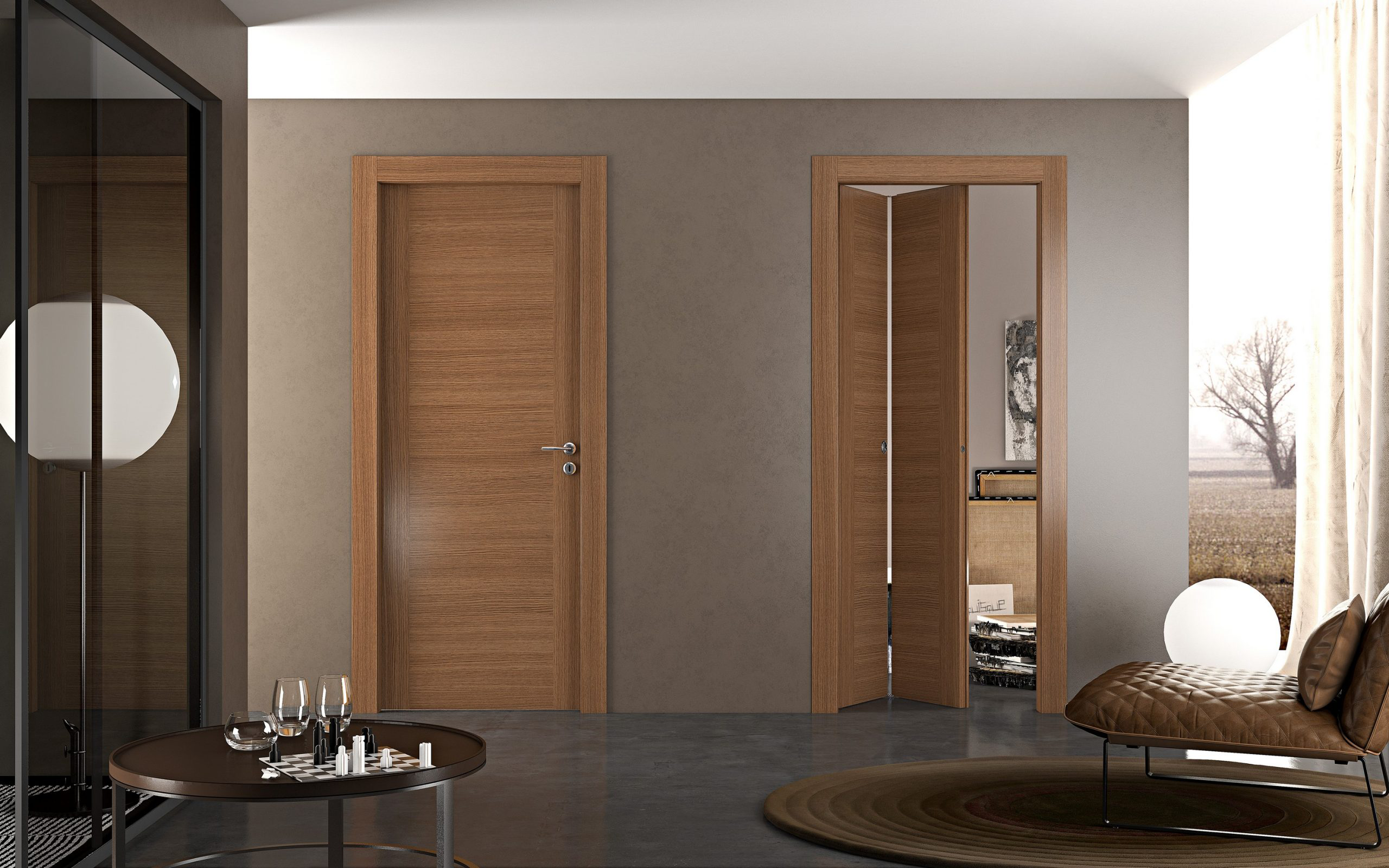
Tips for Measuring Your Interior Door
Measuring for an interior door is a crucial step in ensuring that the door fits properly and functions as it should. Whether you’re replacing an old door or installing a new one, taking accurate measurements will save you time and frustration during the installation process.
Step-by-Step Guide to Accurate Door Measurement
Accurate measurements for your interior door are crucial. Here’s a simple, step-by-step guide to help you measure properly:
- Measure the Door Frame Width: Start by measuring the width of the existing door frame. Use a tape measure to measure from one side of the frame to the other. Please measure at the top, middle, and bottom of the frame to ensure it’s straight. If the measurements are different, you may need to adjust your door size accordingly.
- Measure the Door Frame Height: Next, measure the height from the floor to the top of the frame. Again, take three measurements—at the left, middle, and right of the frame—to ensure the frame is square. The standard interior door height is typically 80 inches (203 cm); however, always confirm the actual measurements.
- Check the Door Thickness: Measure the thickness of the existing door to determine whether it’s a 1 3/8-inch or 1 3/4-inch door. The thickness will affect the choice of hardware and hinges you’ll need, so it’s important to measure accurately.
- Measure the Opening (If Replacing a Door): If you’re replacing an old door, measure the actual opening in the wall. Be sure to account for any trim or molding around the door frame. This ensures your new door fits properly within the space.
- Consider Clearance for Swinging Doors: When installing a swinging door, ensure there is sufficient space for the door to open fully without obstruction. Measure from the door frame to any nearby walls, furniture, or other obstacles.
Tools You’ll Need
To measure your interior door accurately, you’ll need a few basic tools. Having the right tools will make the process easier and more efficient.
- Tape Measure: A tape measure is essential for getting accurate measurements of the door frame width, height, and depth. A retractable measuring tape is ideal because it’s easy to use and gives precise readings.
- Level: A level ensures that your measurements are even and that the door frame is square. This is crucial for ensuring that your interior door fits properly without gaps or misalignment.
- Pencil and Paper: Use a pencil to mark your measurements and a piece of paper to record them. Writing down the measurements helps prevent mistakes when it comes time to order the door.
- Straight Edge: If you’re measuring the width or height of the frame, a straight edge can help you get accurate, level measurements across longer spans.
- Door Jamb Template (Optional): If you’re not replacing a door but are installing one for the first time, using a door jamb template can help you mark the correct locations for hinges and handles, ensuring a smooth installation.
Common Measurement Mistakes to Avoid
Measuring for an interior door may seem straightforward, but there are a few common mistakes that can lead to frustration later. Here’s what to watch out for:
- Not Measuring Multiple Points: Always measure at the top, middle, and bottom of the frame for both width and height. If you only measure at one point, you risk missing variations in the frame size, which can lead to an incorrect door fit.
- Ignoring the Door Swing: When installing a swinging door, consider how far it will open. You need enough space around the door to allow it to swing freely. This is often overlooked, leading to door installations that don’t function as expected.
- Forgetting to Account for Trim and Molding: When measuring for a new door, it’s easy to forget the trim or molding around the door frame. Make sure to measure the door opening, not just the frame, to avoid ordering a door that’s too large.
- Incorrect Thickness Measurement: The thickness of the interior door is important for selecting the right hinges and hardware. Double-check the thickness of your door to ensure it is compatible with your door frame and hardware.
- Failing to Check for Squareness: A level is an essential tool to make sure your frame is square. If the frame is out of square, even a perfectly measured door will not fit properly, leading to gaps or difficulty opening and closing the door.
- Assuming Standard Sizes: Not all door frames are standard size. Just because the existing door seems “standard” doesn’t mean that’s the case. Always measure your frame before assuming the size of the door you need, especially in older homes.
Conclusion
Measuring for your interior door is an important step in ensuring the door fits perfectly and functions properly. With a simple step-by-step guide, the right tools, and a careful eye for common mistakes. Whether you’re replacing a door or installing a new one, accurate measurements will help ensure a perfect fit.
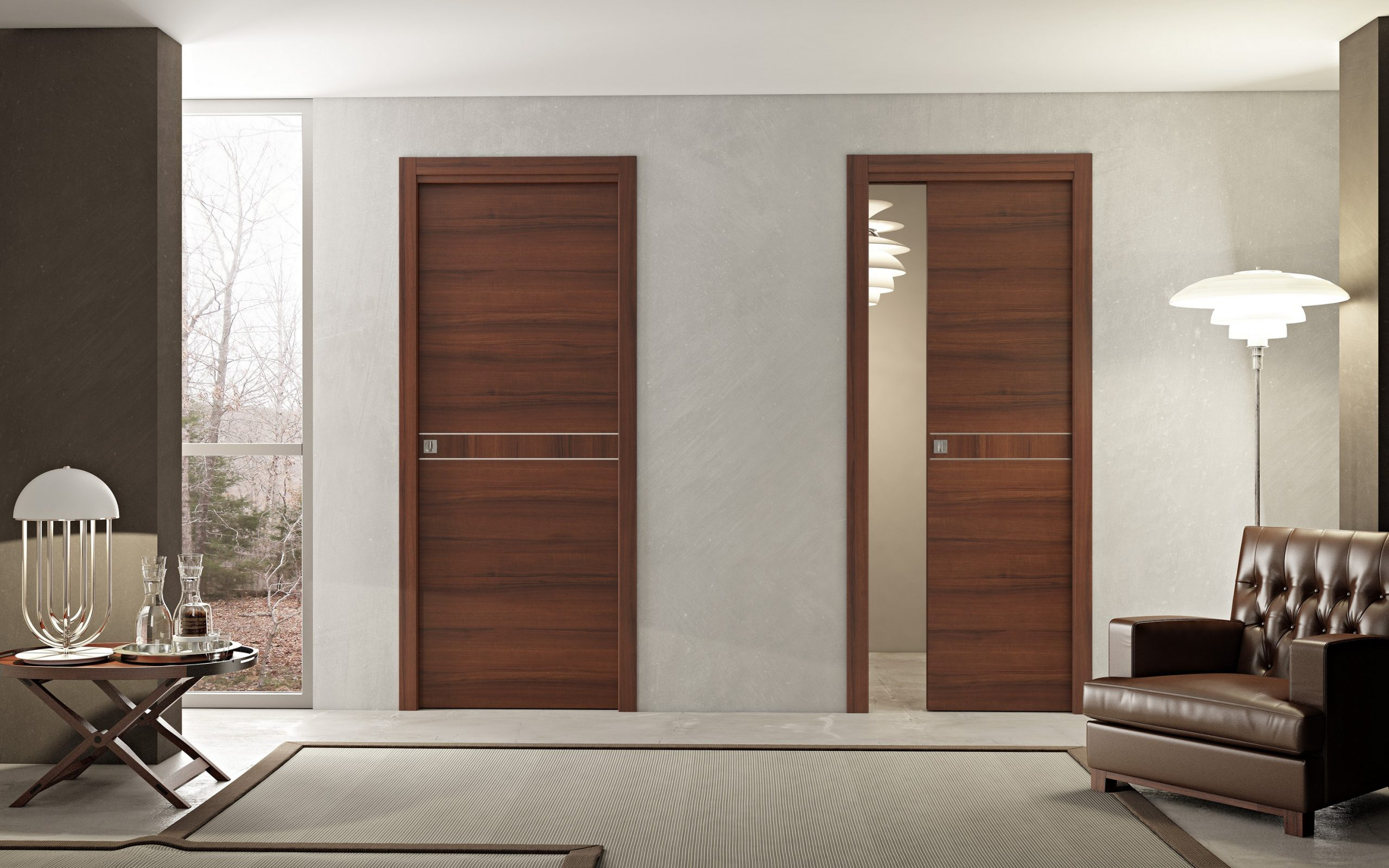
Conclusion
Selecting the right interior door is more than just a design choice—it’s about functionality, durability, and creating the right atmosphere for your home. Interior doors can transform a space, providing both privacy and a cohesive look that ties together the various elements of your home.
Choosing the Right Interior Door for Your Home
When selecting the right interior door for your home, the first consideration is the style. Are you looking for something sleek and modern, or a more classic, timeless design? The style of your door should complement the room’s overall aesthetic. For example, a contemporary interior door with clean lines and minimalistic hardware works well in modern homes, while traditional panel doors are perfect for more classic designs.
Beyond style, consider the materials. Solid wood doors are renowned for their exceptional durability and soundproofing qualities, making them an ideal choice for bedrooms or offices. On the other hand, hollow-core doors are lighter and more affordable, which is why they’re often used in common areas, such as hallways. Don’t forget about finishes, either—painted, stained, or natural finishes all add a different touch to your home’s decor.
Finally, don’t overlook functionality. Does the door need to be fire-rated or moisture-resistant? In high-humidity areas, such as bathrooms or kitchens, selecting a door with moisture resistance will help ensure it lasts longer. Take the time to consider how the door will function as part of the space’s overall design and practicality.
How to Ensure a Proper Fit?
Once you’ve selected the perfect interior door, it’s crucial to ensure a proper fit. A door that doesn’t fit correctly will cause issues with closing, opening, and sealing properly. To start, always measure the door frame carefully before purchasing a new door. Measure the height, width, and depth of the existing frame to ensure the new door fits perfectly without requiring extensive adjustments.
If you’re unsure about measuring or the fit, it’s a good idea to consult with a professional. They can help ensure you purchase the right size and type of door for the frame, especially when working with unusual frame sizes or older homes.
Don’t forget to check the door swing, too. The direction in which the door swings can affect the flow of the room and impact the utilization of space. Ensure you select a door that swings in the most practical direction.
Lastly, proper installation is key to ensuring your door fits and functions as it should. A well-installed door not only enhances the look of the space but also improves its efficiency, such as through noise reduction and energy savings.
Relate FAQ
What are standard interior door sizes?
Standard interior doors are typically 80 inches (6'8") tall and 30 inches wide. Other common widths include 24, 28, 32, and 36 inches, with 30 inches being the most frequently used.
What is the most common door width?
The most common door width for interior doors is 30 inches. This width is often used for bedrooms, bathrooms, and hallways, providing ample space for easy passage.
What height are interior doors usually?
The standard height for interior doors is 80 inches (6'8"). However, custom doors can be ordered for taller spaces or specific design preferences, typically in increments of 2 inches (82", 84", etc.).
Are there custom door sizes available?
Yes, custom interior door sizes are available for specific requirements. For example, if you have a non-standard opening or unique architectural needs, custom-sized doors can be made to match your exact specifications.
What should I consider when choosing an interior door size?
When selecting an interior door, consider factors such as the door frame size, the room's purpose (privacy, accessibility), and whether you require a wider door for wheelchair access or other special needs.
What is the standard door thickness?
The standard thickness for interior doors is 1 3/8 inches. However, thicker doors, such as 1 3/4 inches, may be preferred for added durability and soundproofing, especially in office spaces or rooms requiring more privacy.
How do I measure for an interior door?
To measure for an interior door, measure the width and height of the door frame, ensuring you include the thickness of the frame. It's important to measure at multiple points to account for any irregularities in the frame.
How do I choose the right interior door size for my room?
Choosing the right size depends on the room's layout, the door's function, and aesthetic considerations. For example, larger openings may require 36-inch doors, while narrower spaces may be better suited for 28-inch or 30-inch doors.


